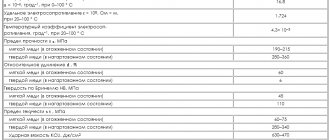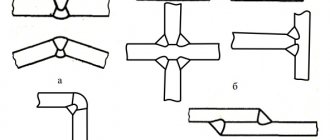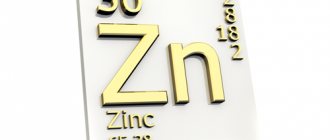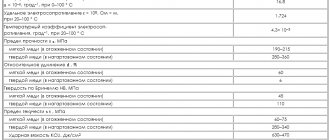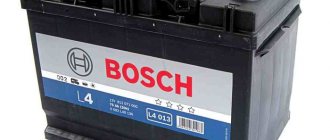28.01.2021
Properties and characteristics of fluoroplastic
Fluoroplastic was created in 1938. It very quickly became a popular and in-demand material, which is used in a variety of industries - from medicine to the military industry. And all thanks to the unique properties of polymers. What is so good about this plastic? We offer a detailed description of the properties and physicochemical characteristics of fluoroplastic, its advantages and disadvantages.
Total information
The name “fluoroplastics” most often refers to F-4 (this is the most common and inexpensive of all fluoroplastics). Its chemical formula is (-C2F4-)n. In the world, the polymer is known by the abbreviation PTFE (polytetrafluoroethylene, we have PTFE) and by many brand names that have taken root and become common (Teflon, Halon, Flubon, Algoflon, Hostaflon, Polyflon, Gaflon, Soreflon).
Pure fluoroplastic is a white, opaque plastic that is smooth and slippery to the touch. The main properties that distinguish it from other plastics:
- the highest chemical inertness - resistance to acids, alkalis, petroleum products, solvents (withstands even boiling in aqua regia);
- resistance to water vapor, complete inability to absorb water;
- resistance to high and low temperatures (begins to melt at 327 °C, but does not go into a fluid state).
If we supplement these characteristics with the high dielectric and antifriction properties of fluoroplastic, we can see that this combination of useful properties is not found in any other material. But even that can be improved. Therefore, now, in addition to pure polymer, they produce fluoroplastic with fillers (graphite, fiberglass, and metal powders are added to the compositions).
Popular brands of fluoroplastic F-4 (and their scope):
- PN (electrical engineering, high-reliability products);
- O (general purpose products);
- T (thick-walled products);
- A (isostatic and compression pressing for the production of products of precise size);
- C (special high-reliability products).
The material is produced in the form of finished products, but more often in the form of blanks - sheets, films, bushings, rods. For more information about different brands of polymer and the features of its production, see our article here.
Advantages of PTFE:
- low porosity;
- almost zero water absorption;
- low adhesion;
- low friction coefficient;
- chemical inertness;
- biological inertia;
- fire resistance;
- high electrical strength;
- preservation of properties even with critical temperature changes;
- low electrical conductivity (material – dielectric, excellent electrical insulator);
- ease of machining.
Ftoroplast-4
Most often, when fluoroplastics are mentioned, they mean fluoroplast-4. This is the most common and cheapest type of plastic to produce, known in Europe under several names. In the USA it is called “Teflon” or “Halon”, in the UK – “Flubon”, in Germany – “Gostaflon TF”, in Japan – “Polyflon”, in Italy – “Algoflon”, in France – “Soreflon” or “Gaflon” "
It is manufactured and sold both in “pure” form and with fillers: graphite, metal powders and fiberglass. Additives can enhance certain properties by tailoring the polymer to specific needs. Blanks are usually sold in the form of disks, rods, plates and pieces .
Fluoroplast-4 has excellent heat-resistant and anti-friction properties, is an excellent current insulator and can easily withstand even aggressive chemical environments. This allows the material to be used in the creation of the primary winding of high-voltage wires, conductive and heating cores, heating cables, in the manufacture of gaskets, washers, hoses for hydraulic systems and for heated floor equipment.
Physicochemical characteristics
| Characteristic | Meaning |
| Density, g/cm3 | 2,14–2,26 |
| Heat capacity, cal/g °C | 0,25 |
| Coefficient of thermal linear expansion 1·10-5 °С | 8–25 |
| Thermal conductivity, kcal/m, h °C | 0,2 |
| Glass transition temperature, °C | -120 |
| Melting point, °C | 327 |
| Minimum operating temperature, °C | -269 |
| Maximum operating temperature, °C | 260 |
| Water absorption in 24 hours | 0 |
| Heat resistance according to Vicat, °C | 110 |
| Thermal stability at 415 °C, h, not less | 110 |
| Decomposition temperature, °C | More than 415 |
| Weight loss at 420 °C in 5 hours, % in 3 hours | 0,2 |
| Weather resistance | excellent |
| Chemical resistance | All mineral and organic acids, alkalis, organic solvents, oxidizing agents, gases |
Plastic is not wetted by water and is not affected by it even during long-term tests. It is also resistant to the absorption of other substances and does not form deposits.- It tolerates use well in tropical conditions and is not damaged by fungi and bacteria.
- Chemical and biological inertness make it possible to use PTFE in medicine and the food industry. It is completely harmless; under normal conditions it does not interact with physiological fluids and does not emit harmful compounds.
- Temperature stability allows fluoroplastic to maintain stability and performance in the range of -269…+260 °C.
- The material can be chemically destroyed only by using molten alkali metals, elemental fluorine, and chlorine trifluoride (at high temperatures).
- The unusually high chemical resistance of fluoroplastics is the result of the high shielding effect possessed by the electronegative fluorine atoms.
- The polymer is capable of transmitting ultraviolet rays and is resistant to oxidation and hydrolysis.
- High resistance to aging allows us to provide a long guaranteed shelf life of fluoroplastic without reducing quality - 20 years or more.
Gas permeability of PTFE
| Characteristic | Meaning |
| Air | 1,1·10-9 |
| Hydrogen | 6,3·10-9 |
| Oxygen | 2,3·10-9 |
| Nitrogen | 0,7·10-9 |
| Carbon dioxide | 4,8·10-9 |
Melting and burning
- At the melting point (327 °C), the material loses its crystalline structure and becomes amorphous and transparent. But until the onset of thermal decomposition (415 °C) it remains in a highly elastic state, without becoming viscous.
- The material burns only with access to oxygen and an open flame (as soon as it is pulled out of the flame, it will go out). When burning, fluoroplastic does not melt, but chars and emits very little heat - 10 times less than burning polyethylene. During combustion under normal conditions, fluorine compounds are released, which are harmful to living organisms (but they are not released in a vacuum).
- The polymer begins to decompose at temperatures above 415 °C.
Where did it come from?
Fluoroplastic is a compound that was first produced back in 1938. The author of the invention is considered to be Rem Plunkett. Currently, the words “fluoroplastic” and “Teflon” are used interchangeably. Engineers of the Soviet Union were able to create the same connection during the Second World War. At that time, a fluoroplastic tube was of great value: the material was issued for strictly limited purposes and only in small quantities. Each such procedure required confirmation from representatives of the special security service.
Nowadays, sheet fluoroplastic (as well as in other forms) is a very common material, widely used to achieve a variety of purposes. Access to it is no longer limited by anything (except, of course, the price).
Mechanical properties
| Characteristic | Meaning |
| Tensile strength, kgf/cm2 | 200–300 |
| Elongation at break,%: | 300–350 |
| relative | 350–500 |
| residual | 250–350 |
| Ultimate compressive strength, kgf/cm2 | 120 |
| Modulus of elasticity in compression, kgf/cm2 | 7000 |
| Ultimate strength during static bending, kgf/cm2 | 110–140 |
| Modulus of elasticity in bending (at 200 °C), kgf/cm2 | 4700 |
| Specific impact strength, kgf cm/cm2 | more than 100 |
| Brinell hardness, kgf/mm2 | 3–4 |
| Shore hardness at 20 °C: | – |
| scale C | 85–87 |
| D scale | 55–59 |
| Rockwell hardness (scale I) | 80–95 |
| Poisson's ratio | 0,45 |
| Friction coefficient for steel | 0,2 |
- The material's low surface adhesion is a consequence of its exceptionally low surface energy.
- Under certain conditions, the already low coefficient of friction can be reduced to 0.02.
- One of the important operational advantages of fluoroplastic is the ability to easily process it mechanically. It is cut, drilled, polished.
The physical and mechanical properties of fluoroplastic depend on temperature. This is how, for example, the load required to cause compression deformation changes (the table shows load values depending on temperature, kgf/cm2):
| Deformation, % | -50 °C | 0 °C | 25 °C | 50 °C | 100 °C | 150 °C | 200 °C |
| 1 | 203 | 157 | 62 | 49 | 31 | 17,5 | 11 |
| 2 | 304 | 210 | 92 | 66 | 39 | 27 | 20 |
| 3 | 350 | 236 | 105 | 77 | 48 | 33 | 27 |
| 4 | 374 | 251 | 120 | 85 | 59 | 39 | 31 |
| 5 | 390 | 262 | 127 | 92 | 62 | 44 | 35 |
And this is how the tensile yield strength changes:
| Temperature, °C | 25 | 50 | 75 | 100 | 150 | 200 | 250 |
| Yield strength, kgf/cm2 | 42,4 | 106,9 | 83,5 | 67,2 | 46,6 | 35,5 | 28,6 |
Progress and industry
Plexiglas: types, application, properties and characteristics
Currently, the density, weight of fluoroplastic, its resistance to aggressive factors, and safety for humans have made this material absolutely indispensable for industry and everyday life. The average person rarely thinks about what most of the equipment around him is made of, but Teflon was the raw material. Thus, in electronics, the density of fluoroplastic has made it the optimal material for constructing high-quality equipment. In addition, this material has the ability to block current, which makes its field of application even wider. Teflon can be used in wiring work, in the design of capacitors and other parts of electronic systems, including those of very high complexity, as well as those that require increased durability and reliability.
If you pay attention to modern medical devices, you will notice that fluoroplastic is used very actively here too. In particular, it serves as a material for the production of implants and is widely used by dentists
PTFE is also indispensable for ophthalmologists. It is this substance that is used in the manufacturing of pacemakers and blood vessels for implantation into the human body. Fluoroplastic is completely safe for humans, which makes the possibilities for its use so wide.
Price
The price of one kilogram of sheet F-4 is determined depending on:
- grades of material;
- technical properties;
- manufacturer;
- conditions, scope of delivery.
It should be noted that the wholesale cost of goods is usually 10 - 20% lower than the retail price.
Sales of fluorlon F-4 (plates, rods) at a wholesale price range from 700 rubles. up to 800 rub. The cost of recyclable materials starts from 400 rubles. The modified alloy is estimated at 800 - 900 rubles per kg or more, depending on the composition and modifying additives.
Wholesale prices for fluoroplastics of other brands are lower than those of F-4. Namely:
- F-2. 500 - 550 rub/kg;
- F-3. 500 - 700 rub/kg.
Fluoroplastic in powder form is a rather rare product. The difference in the cost per kilogram of it among different manufacturers is quite large. The average cost of 1 kilogram of product is from 1000 rubles. up to 1100 rub.
If for semi-finished products, when setting prices, the determining indicator is the weight of the product, then the price of the final product is formed depending on its complexity.
Prices for individual products made according to customer drawings are significantly higher than for mass-produced products.
Please note that the market for fluorinated plastics is flooded with cheap products made in China. According to RBC data for 2016, about 66% of imported fluoride entered the market. A significant amount of this product turns out to be a recycled product (from 30% to 70%). There is a theory according to which materials consisting of 35% virgin raw materials and 100% virgin materials have the same coefficient of friction. This makes it possible to sell recycled products.
Under static loads, the difference between a counterfeit and a high-quality part is not critical. But under dynamic loads, the counterfeit quickly fails and can cause the entire mechanism to break down.
Where is it used?
Fluoroplastic is used in many areas of the national economy. It is used very often:
- In the automotive industry. Since the coefficient of friction of this material is very small, it makes high-quality bearings, friction units, support posts, etc.
- In the electrical industry and electronics. The fluoroplastic insulator is also simply excellent. Therefore, it is very often used in the manufacture of cables, circuit boards, radio components, etc.
- In medicine. In addition to prostheses and implants, fluoroplastic is used to make containers for storing serum and plasma. Packaging for medicines is also made from it.
- In the food industry. This material is very well suited, for example, for the manufacture of dough rolling shafts used in bakeries, pumps for bottling milk, etc. Teflon on the inner surface of frying pans is also a type of fluoroplastic.
- When assembling water supply and sewer systems (FUM tapes).
Thus, the material is very popular, and in some cases simply irreplaceable - fluoroplastic. We will consider the characteristics (its applicability is actually very wide) provided for by GOST below.
Application
Fluorlon F-4, often called “Teflon”, is the most popular in this range of plastics. It is this polymer material that is used to give non-stick properties to food utensils. In addition to F-4, other fluoroplastics are used in:
- light industry. There, a thin Teflon layer is used to cover the surface of sportswear and shoes;
- medical industry. Since fluoroplastic is environmentally friendly and not harmful to the human body, it is used to produce implants, containers for storing blood products, and packaging for medications. Another area of application is dentistry;
- production of machines and mechanisms. The main area of application here is parts that are resistant to friction and subject to dynamic loads (bearings, rings, seals, engine elements, etc.). Fluorolone parts have performed well when used in vacuum, aggressive environments, and at low temperatures;
- electrical and radio engineering. Fluoroplastics are insulators or conductors of electricity. They are used to produce cables, relay parts, switches, etc.;
- chemical industry. Here, the property of fluoroplastic is used: inertness to acids and alkalis. Therefore, laboratory glassware, storage and transportation containers, pipelines, column-type units, and gaskets are made from it. That is, those products that are in continuous contact with aggressive substances;
- food industry. The main direction is the application of non-stick and other coatings. This is how pans, baking dishes, and food storage containers are treated.
Fluorolone also serves as a lining material for pipes and pumps; hoses and pipes of various sizes and thicknesses are produced from it.
Supplier: LLC RTG "MetPromStar"


